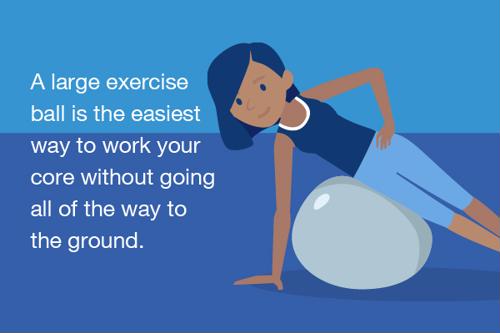
Keeping your joints moving is a great form of pain relief and can be more effective than staying still.
Physical activity is a necessity for living your healthiest life. According to the Physical Activity Guidelines for Americans by the Centers for Disease Control and Prevention, adults need to spend at least 150 minutes a week dedicated to moderate-intensity aerobic activity, also prioritizing muscle-strengthening activities two or more days of the week to focus on the legs, hips, back, abdomen, chest, shoulders and arms.
For those living arthritis, carpal tunnel syndrome or another debilitating disease, exercise might by the last thing on your mind. However, keeping those joints moving is a great form of pain relief and can be more effective than sitting still.
Pain relief exercises
Walking, swimming and yoga are three great ways to work your body without putting too much pressure on your joints. Here are a few other moves you can incorporate into your fitness regimen for arthritis pain relief, recommended the Arthritis-health blog by Veritas:
Floor exercises: Getting down on the floor to exercise can strengthen your lower back as well as your abdominal and pelvic floor muscles. This will put less strain on your legs, knees and ankles while walking. Try the pelvic tilt, bridge and plank moves suggested here.
Exercise ball moves: Working out your core is key to overall body strength and pain relief! A large exercise ball is the easiest way to work your core without going all of the way to the ground. Try oblique and half crunches on the ball to strengthen your abdominal muscles.
If you're new to exercise, don't force yourself to implement all of these moves into your routine. Just start slow and build up your workout as the days get easier!
Knowing when to take it slow
While staying active is vital, understanding when it's time to rest is a critical component to taking proper care of your body. According to Veritas Health, it starts with knowing the difference between good and bad pain.
Good pain refers to the healthy soreness you feel after completing a tough workout, while bad pain is the result of overworking an arthritic joint and feeling debilitated because of the harshness.
If you know the pain you're feeling is good, don't be afraid to work through it. But if the feeling comes on too strong and can be identified as an arthritis flare-up, stop what you're doing immediately. Take a break from working out for a few days and use rest and ice and heat therapy to reduce pain and inflammation.
Use IMAK Compression gear
If you want to make the most of your exercise regimen and keep your bones, joints and muscles comfortable during your workout, invest in IMAK Compression gear. The Arthritis Elbow Sleeve, Knee Sleeve and Shin Sleeve are designed with mild compression to create warmth to help increase circulation, which works to reduce pain and promotes healing. These pieces are all ideal for people living with chronic pain from arthritis, fibromyalgia, overuse or other conditions who want to continue living an active lifestyle.
